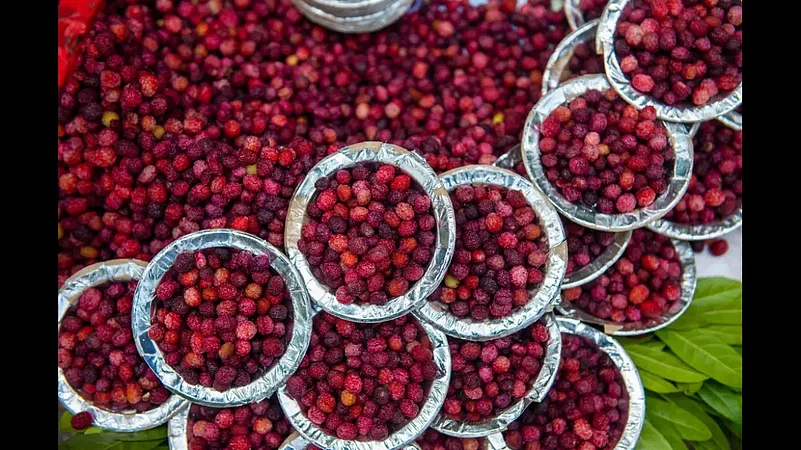Travelling through the tourist hill towns of Uttarakhand during peak summer, it is impossible to miss the basket loads of red berries being sold by the wayside and in the markets. The uninitiated often mistake it for raspberries. It is the ‘kafal’, the much loved fruit of the western Himalayas, which also enjoys the honour of being the state fruit of Uttarakhand.
Growing between 1,000 metres and 2,000 metres, Myrica Esculenta (bayberry) is an indigenous tree species which grows in areas dominated by pine and oak forests. Not only local people set great store by these berries (also known for their medicinal properties) but they are also popular with tourists who visit the state in summer. According to local sellers in Nainital, the pandemic and the lack of tourists for the past two years had badly affected the sale of kafal.
The popularity of kafal among the hill people has also earned it a place among the folk tales. One of the most cited example is that of a summer bird which keeps crying ‘kafal pako mai ne chakhyo’ – the kafal has ripened but I have not tasted them; apparently she is the soul of a sad girl who died when she was beaten up by her mother because the mother suspected she ate some of the berries that were left in her safe keeping.
As summer approaches, the unripe green berries turn pink and are sour to taste. The fully ripe berries, identified by their dark red colour, are sweet. Usually, women from the villages collect the berries, which are then carted to the urban markets. Because the berries are only available for a short period, the price is regulated by the harvest and the distance it has to travel, according to a seller. The fruit is not only known for its taste but also for its medicinal properties, which contributes to the high price of kafal too. According to the hill people, different parts of the tree are useful for many kinds of ailments. The plant is also used as fodder and fuel.
According to some studies, the presence (or absence) of kafal trees is an indication of the condition of the forest and climate change. When large trees are cut down, the kafal plants are affected. According to media reports, in early 2019, farmers noticed that the kafal berries were ripening in winter, which many scientists put down to the effects of climate change.
While Uttarakhand is famous as a kafal growing state, the tree can also be found in select areas in Himachal Pradesh and north-eastern states in India and in Nepal, according to media reports.


























